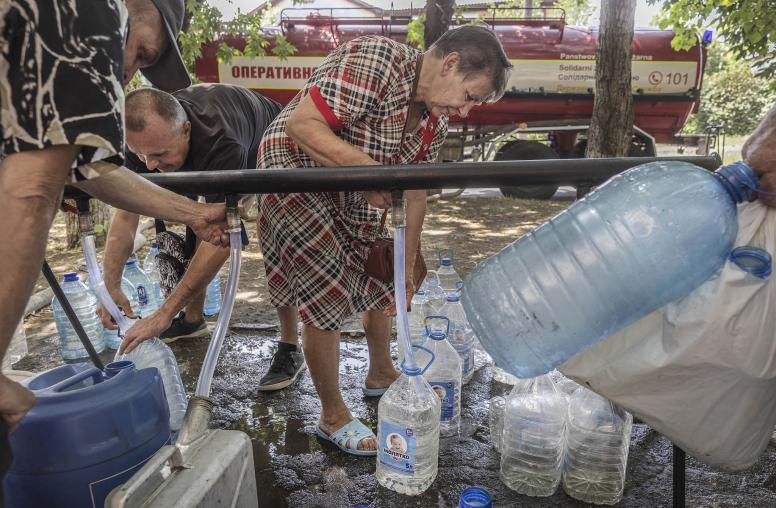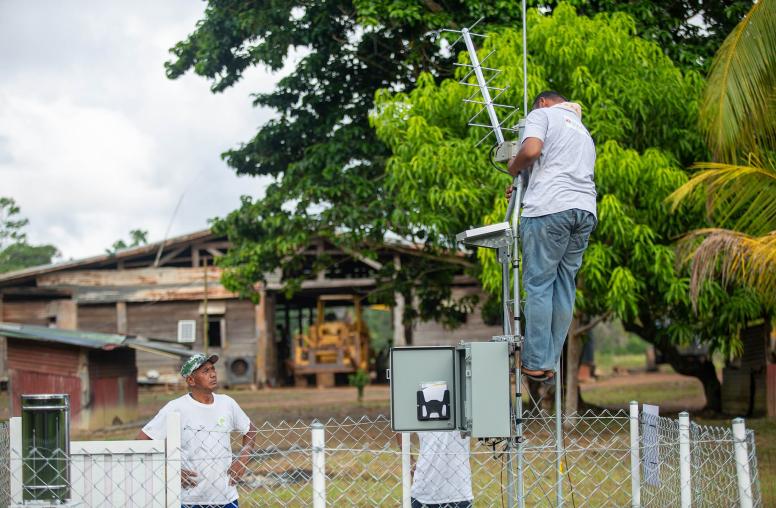Navigating Land Rights in the Transition to Green Energy
Green energy is crucial for addressing the climate crisis — but any investment must factor in marginalized and indigenous communities.
At the U.N. Security Council meeting on September 23, world leaders resoundingly agreed that the climate crisis is one of the defining challenges of the century. Yet, a recent Chatham House report highlights how current commitments to reduce greenhouse gas emissions fall far short of what is needed to reduce the risk of catastrophic climate change by the end of the 21st century, with the likelihood of heat waves and crop failure significantly increasing within the next two decades if emissions do not come down drastically by 2030.

With the global energy sector responsible for two-thirds of carbon dioxide emissions, renewable energy has enormous potential to mitigate the impacts of the climate crisis while simultaneously addressing energy poverty in developing states worldwide.
However, clean energy development is far from smooth sailing, as renewable energy infrastructure requires ten times more land than the fossil fuel equivalent to generate the same power. Conflict over land rights may stymie green energy transitions, as exploitative practices by governments, developers and energy companies often harm marginalized and indigenous populations — while access to the benefits of electrification favors the wealthy.
Where Renewable Energy, Land Rights and Marginalized Populations Meet
States with weak land-tenure laws and limited viable land have seen an increase in renewables-related conflicts in the last decade. Land that was once at the outskirts of government concern has now become the center of attention as policymakers pursue acreage-intensive biomass, wind, solar and hydro projects. In addition, a report from the Business and Human Rights Resource Centre found that only five of the 50 renewable energy companies surveyed had adequate policies in place to prevent human rights abuse. While the true conflict potential is difficult to judge, early indications show growing resistance to large-scale renewable projects from indigenous communities worldwide. A 2019 analysis found that five out of the top seven countries associated with future wind power development ranked ‘high’ or ‘extreme risk’ on indigenous rights, land rights and security force violation indices.
Among these countries is Mexico, where powerful winds blowing across the Isthmus of Tehuantepec have drawn dozens of turbine developers. The isthmus is home to the Zapotec and Huave indigenous peoples, who have not all accepted renewable energy development with open arms. Instead, several wind power projects have been delayed, relocated or abandoned after facing mounting protests, including a year-long demonstration against the “Mareña Renovables” wind farm — the largest proposed energy generating facility in the region. Landless residents are the most vulnerable in the process, as they have no bargaining power but can lose the most when turbines reduce available farmland and grazing pasture.
Meanwhile in Kenya, renewable energy already accounts for 90 percent of the national energy grid thanks to investments in hydropower and geothermal energy. However, in the process, several large-scale projects have come under heavy opposition from local residents. The land-intensive nature of renewable energy projects has meant that many developments displace local residents, yet the power is sold to the national grid, which displaced communities can rarely access. Two multi-million dollar wind power projects were canceled in the last five years as a result of community hostilities towards development and concerns over land. Such processes have only heightened inequality and exacerbated discontent between these communities and the government and energy sectors.
To achieve the emissions reductions necessary to avert catastrophic climatic changes, governments and companies promoting renewable energy development must consider its impact on local communities, not just its environmental benefits. As evidenced by the two cases, community rejection of these projects not only weakens the reputation of clean energy, but also increases the friction between governments, companies and marginalized peoples. This can exacerbate existing grievances, especially in the case of indigenous communities that often feel the brunt of development impacts.
An Inclusive Path Forward
Taking Africa as an example, more than 60 percent of disputes surrounding land and natural resource investment are a result of forceful evictions. Community-based approaches to development can help reduce conflict by addressing power dynamics between large companies and local communities, especially over land rights. Renewable energy companies should be required to develop social and environmental impact studies as central components of each project. Involving community stakeholders ensures free, prior and informed consent procedures are carried out in a timely and sensitive manner and help inform land-leasing agreements, benefit-sharing mechanisms and resettlement agreements.
Additionally, banks and other investors must share responsibility with the local government to ensure that these assessments are performed in a transparent way and that energy companies are held accountable to fully implement the agreements with communities.
Finally, as the U.N. Secretary-General urges nations to make bolder Nationally Determined Contributions (NDCs) leading up to the 26th U.N. Climate Change Conference in November, it is vital that these commitments adequately address land rights to reduce future conflicts around green energy development. While a majority of NDCs include commitments to expanding renewable energy generation, few NDCs include specific provisions to ensure that land rights will be protected and project benefits will be shared with marginalized communities. World leaders can lead by example through including consideration of land rights in the NDCs they submit. This example also increases pressure on other countries to consider these issues as part of their own NDCs — protecting the livelihoods of indigenous and marginalized communities and reducing the risk of conflict, while increasingly transitioning to a new global energy system.
In fact, renewable energy development can be a catalyst for improving security in fragile states. Organizations such as Energy Peace Partners (EPP) works to extend access to energy — and specifically renewables — in states that are emerging from conflict. By working with the U.N. and other partners to utilize renewable energy sources rather than diesel generators, EPP helps these organizations leave behind a long-term community resource that can stabilize a post-conflict community through expanding energy access. EPP has supported projects in the Democratic Republic of Congo, Somalia and South Sudan and has partnered with USIP on research highlighting the peace potential of clean energy.
In instances where land rights are contested, mediated dialogue and conflict resolution strategies would serve vital roles at the onset of development projects. Incorporating peacebuilding strategies while engaging communities to develop renewable energy solutions can advance sustainable development, encourage equitable energy access and reduce conflicts over resources. Each of these three goals is critical to achieving a successful global green energy transition.
Chris Collins is a research assistant for the climate, environment and conflict team at USIP.



